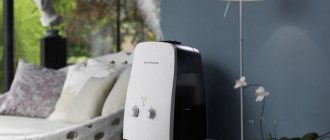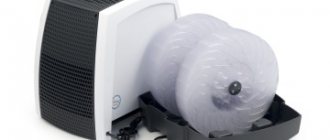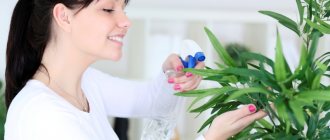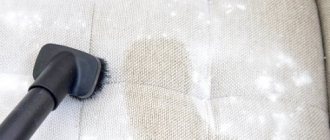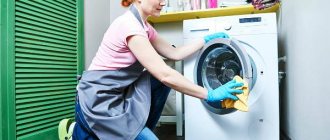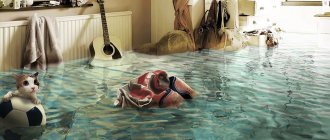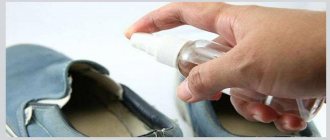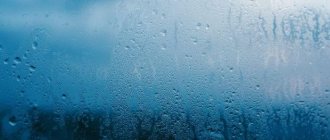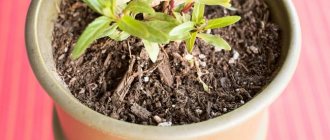An air humidifier is a useful device for maintaining an optimal microclimate in the apartment. It is especially necessary in the cold season, when central heating makes the air in the room dry. When in contact with water during operation, the device becomes dirty and covered with bacterial plaque. To clean your humidifier, you don't have to take it to a workshop. It is quite possible to do this with your own hands. To remove scale and mucus accumulated inside it, both professional and folk remedies are used.
Types of Humidifiers
Manufacturers offer several types of devices to improve the microclimate. The following options can be purchased:
- cold humidification device (produces cold steam);
- hot humidification device (with hot steam);
- ultrasonic humidifiers (an ultrasonic element turns water into dust).
In order for the device to function fully, it needs periodic cleaning.
Why does plaque form?
The device is used to increase the moisture content in the air, which may decrease due to:
- operation of heating devices;
- incorrect design of the location of doors and windows in the house;
- the presence of the so-called sunny side in the room;
- high or low temperatures in winter and summer.
Important! The optimal level of humidity is 40-75%.
The device allows you to maintain good health. Low hydration may cause weakness, general discomfort and dizziness. An electrical appliance is also needed to clean the room from microscopic dirt and dust. A humidifier is necessary for people with chronic respiratory diseases.
The mechanism of operation of the device depends on its type:
- cold or hot humidifiers (use cold or hot steam, respectively);
- ultrasonic devices.
An air humidifier requires systematic maintenance, in particular cleaning. The device operates using water that is poured into the tank. It often causes the appearance of mineral deposits on the walls. This is why the use of tap water is considered undesirable.
The formation of scale is a natural process. Hard water contains calcium, magnesium and other biological substances. When water evaporates, scale forms on the parts of the device and its internal walls. Plaque shortens the life of the device and negatively affects air quality.
Important! Operating the device without regular cleaning releases harmful substances. To simplify the procedure for caring for the device, you should fill it with boiled or filtered water if possible. We recommend reading: How to remove brilliant green from linoleum
Cleaning procedure
Scale is a dense mineral deposit that forms on the side surfaces of the tank. To clean a household humidifier from deposits, you need to do the following:
- Turn off the device. Remove the tank from the base and disassemble it into elements.
- Free it from water and rinse.
- Treat the inner surface with a cleaning compound. Use a soft sponge to remove softened scale.
- Wipe the outer part of the body with a flannel soaked in diluted table vinegar (3%).
In ultrasonic humidifiers, you need to clean the membrane surface with a special brush. It is included in the package.
Device health support
The filter must be removed from the device and washed.
Maintaining the operating condition of the device comes down to the following procedures:
- cleaning the working membrane (in ultrasonic designs);
- filter washing;
- complete replacement of filters.
To clean the membrane, it is necessary to use a brush, usually included with the device. If you don't have a brush, a soft cloth or regular sponge will do instead. The device contains special filters that are used for several months and then changed.
If desired, you can clean them of plaque by washing the working part under running water and then drying it for about an hour. It is not allowed to wash products with liquids containing chemical additives (the latter lead to rapid wear).
Cleaners
To clean the air humidifier from any dirt and scale, you can use both professional and improvised methods.
Professional
When choosing special tools, the following characteristics are taken into account:
- effectiveness against mold fungi and bacteria;
- level of danger for humans and domestic animals;
- scope of application - it is better to choose universal ones.
Advice! Some professional formulations contain silver. Such cleaning products destroy any pathogenic microflora and prevent the spread of viruses. They do not contain fragrances, chlorine, or toxic components that cause irritation to the respiratory tract.
To clean your home humidifier, you can use the following:
- "Silvester" (spray). The device must first be descaled with a sponge, and then the cleaned surface must be treated with the composition. Allow the product to dry naturally, wipe with a dry cloth.
- "SumerSil". Before use, the concentrate is diluted with water in accordance with the instructions.
- "Bacillol AF". Clears scale very quickly. Does not contain formaldehyde or fragrances. The product must not be used for filters. Available in 100 ml bottles with convenient dispensers. To clean the device, simply wipe it with the prepared solution inside the tank. No rinsing is required. It is enough to wipe the walls with a soft sponge.
- "Surfacesafe". Sold in 750 ml bottles. They can clean surfaces made of any materials. It is odorless, contains no hazardous substances, leaves no streaks and removes all microorganisms. Does not destroy rubber, aluminum and acrylic. A two-minute exposure is sufficient for complete disinfection.
- "Surfanios lemon fresh." There are no aldehydes or phenolic compounds in the composition. Approved for cleaning metal, plastic and rubber surfaces. Does not leave stains and does not require rinsing. Removes plaque in 5-7 minutes, prevents the proliferation of mold fungi.
Folk
It is good to clean the walls of the humidifier from a layer of scale using traditional methods. Soft plaque can be easily removed with a sponge and in most cases does not require the use of serious “chemistry”.
The selected product is diluted with water, poured into a tank and left until the resulting scale dissolves. You can use aqueous solutions of vinegar, soda and citric acid.
Vinegar
Lime deposits regularly form on the surface of the humidifier nozzle. It can be cleaned with 9% vinegar.
Attention! You cannot clean with concentrated products, as they can render the nozzle unusable.
Usage diagram:
- Soak a soft cloth in the vinegar solution.
- Wipe the nozzle.
- Fill the humidifier reservoir with water and turn it on.
If you also need to clean the tank itself, then fill it with warm water with the addition of 0.5 tbsp. 9% vinegar, turn on and leave to work for 60 minutes. This will not only remove scale, but also clean the device from mold and microorganisms. The procedure should be carried out outdoors or near a window.
Soda
To clean a humidifier at home, you can use regular baking soda. The procedure is allowed to be performed indoors.
To do this, fill the tank with warm water and dissolve 60 g of soda in it. Stir the solution and activate the device for 1 hour. There will be enough time for the scale to completely remove.
You can clean any parts of the device with baking soda. It also has a disinfecting effect.
Lemon acid
Citric acid will help clean the parts of the device from a dense layer of scale. Mode of application:
- Stir 4 tbsp in 200 ml of warm water. l. acids.
- Pour the resulting solution into the tank.
- Activate the device. Time – 60 min.
Clean the unit using citric acid outdoors. If it is not possible to take the device outside, then it should be placed near an open window and the “spout” should be pointed outward.
Universal care instructions
The humidifier constantly needs preventative cleaning, even if it is new and has not yet become “overgrown” with a thick layer of plaque. This usually involves washing all parts with either clean water or a special solution. But no matter what kind of humidifier you have, the same instructions for regular maintenance can be applied to it.
Step-by-step instructions:
If the manufacturer has not left precise instructions for cleaning the filter, then rinse it with clean water to avoid damage.
If you decide to more seriously clean the filter of your home humidifier, proceed in the following order:
- Turn off the device.
- Carefully disconnect and remove the filter.
- Rinse under running water.
- If any dirt remains, soak in a solution of citric acid.
- Gently go over all critical areas with a soft brush.
- Wash away any remaining plaque with water.
- Dry and place on the workbench.
It is better to study the characteristics of the filter in advance by looking at the instructions. Some models have replaceable cartridges - they need to be changed on time. But there are also replaceable parts that you can clean several times yourself, and then buy new ones.
How to disinfect a humidifier?
Disinfecting the humidifier helps destroy pathogenic bacteria. The procedure must be carried out once every 14 days. For disinfection, you do not need to purchase additional compounds; the simple and accessible components available in the house will be sufficient.
White
For 1.1 liters of cool water, take 6 ml of chlorine bleach. Fill the reservoir with the solution and wait 60 minutes. There is enough time for complete disinfection. If you leave the solution longer, it can cause cracking of the tank walls.
Advice! To remove the bleach aroma, fill the humidifier reservoir with clean water and activate it. When steam formation begins, turn off the power to the device and pour out the water. Repeat steps until the bleach smell is completely eliminated.
Hydrogen peroxide
Pour 500 ml of the drug into the reservoir, wait 60 minutes. Then drain the peroxide and rinse the tank with clean water. There is no need to worry that particles of peroxide will remain on its internal surfaces. During evaporation, the remaining composition will disintegrate into oxygen molecules and water.
Table vinegar
Vinegar not only dissolves scale, removes fungi and mucus, but also helps disinfect the device. Dissolve 260 ml of product in 4.5 liters of water. Fill the tank and turn on the device for 1 hour. Cleaning should be done outdoors. After disinfection is completed, discard the liquid. Fill the humidifier tank with clean water. Let it run until steam forms. After this, drain the liquid again.
Performing disinfection
After cleaning procedures, it is recommended to carry out manipulations to destroy pathogens on surfaces and parts of the device. Refusal to disinfection causes allergic reactions, fungal and infectious pathologies in household members. You can remove pathogenic bacteria using chlorine-containing or folk remedies.
Bleach
Water is poured into the tank, mixed with chlorine bleach, and soaked for 2 hours. Then the solution is poured out and the installation is washed in places of contact with the cleaner. Elements of the product must be thoroughly dried.
Hydrogen peroxide
Peroxide is a budget product for various applications. It has powerful oxidizing, bactericidal, disinfecting, and bleaching properties. The drug destroys bacteria, viruses, spores, fungi. For disinfection you will need 0.5 cups of peroxide, 1 liter of water. The solution is poured into the tank, left for half an hour, then poured out and the surface washed under the tap.
Vinegar
Acetic acid has a wide range of applications. Housewives use it for cooking, face masks, cleaning, and in gardening. Using vinegar, you get rid of mold, rust, unpleasant odors, and scale. Acetic acid is considered a universal cleaner, brightener, and herbicide.
Manipulations are carried out in a well-ventilated place. 250 ml of vinegar essence is poured into the tank, water is added according to the measuring scale. The unit is plugged in and left for 60 minutes. Next, the liquid is poured out and the device is washed thoroughly.
Pollution prevention
In order for the unit to work for a long time and efficiently, it must be kept clean. To do this you need to follow simple rules:
- Timely care. The device must be disinfected every two weeks. This will prevent the proliferation of pathogenic microorganisms, which then enter the room and are inhaled by humans.
- Descaling. The tank must be cleaned of deposits every week. This will increase the life of the humidifier.
- If the means at hand are not effective and cannot cope with limescale, you must use professional compounds. The chemical components they contain will help clean the humidifier more effectively.
- To reduce scale formation, it is recommended to use filtered or boiled water.
- After turning off the humidifier, be sure to drain any remaining liquid. In stagnant water, the number of pathogenic microflora quickly increases, which then enters the air.
- When filling the tank, take into account the manufacturer's recommendations: it is forbidden to pour too little or too much water. This may cause the device to break down.
- It is necessary to monitor the condition of the parts, especially the membrane and filter. If they wear out, they must be replaced. Otherwise, the device will not work correctly and will eventually fail.
- It is not recommended to use a device with any defects. It's better to replace it with a new one.
What solutions should not be used?
Wanting to achieve perfect cleanliness, users rub their devices with various compounds that are harmful not only to the plastic, but also to the health of the owners of the equipment themselves. To prevent them from accidentally being poisoned by harmful fumes, especially responsible manufacturers include in the instructions a long list of substances that are strictly prohibited to use. The list of permitted means, by the way, is much shorter.
The following are usually listed as prohibited:
- chlorine and any chlorine-containing solutions;
- aggressive concentrated acids;
- alcohol and alcohol-containing solutions;
- hydrogen peroxide;
- compositions with essential oils;
- petrol;
- kerosene;
- acetone and other solvents;
- toilet cleaners, etc.
Even light acidic products approved for use should not be left for long, as they can damage the structure of the material and significantly reduce the service life of the device.
Mold removal
To remove mold deposits from the unit, you can use several simple and quite effective methods:
- bleach or bleach solution based on a dessert spoon of chlorine diluted in five liters of water. After an hour's exposure, the tank is thoroughly and repeatedly washed with copious amounts of water;
- a glass of table vinegar diluted in half a bucket of water is poured into the operating device for about an hour, after which the unit’s reservoir is thoroughly washed.
It is optimal to use pharmaceutical hydrogen peroxide, a sufficient amount of which is poured into the humidifier container for an hour.
Cleaning with citric acid
Tap water contains a significant amount of heavy metal salts, the accumulation of which on the internal parts of climate control equipment can not only cause unstable operation of the device, but also often causes premature failure of the device.
To prevent a decrease in the thermal conductivity properties of heating elements, experts recommend using ordinary citric acid to clean the tank, which has properties similar to table vinegar, but is safer for regular use.
To clean the air humidifier, just prepare a solution based on citric acid, pour it into the evaporator tank and remove the softened deposits with a soft sponge.
Modern humidifiers have proven themselves to be reliable and effective climate control equipment that improves the air quality in any type of room. Simple cleaning and maintenance measures for such a device help maintain the functionality of the device and also make its operation completely safe for others.
Preventive measures
It is impossible to completely abandon periodic cleaning of the humidifier - the water will leave a limescale deposit in the tank. But if you follow the rules of prevention, mineral salts are deposited more slowly, and it is much easier to remove them. When using the device you must:
- pour only filtered or distilled water into the container;
- do not use liquid from the tap, especially if there are no filters in the water supply;
- drain the remaining water from the tank if the device is to be left turned off for a long time;
- carry out preventive cleaning of the device from contamination at least once a week.
Before washing the humidifier, you need to study the instructions for the unit. Most manufacturers indicate which products can and cannot be used to clean a specific model.
How to purify water for a humidifier
Constantly buying distilled water for a humidifier is quite expensive. But you can make it at home from ordinary tap liquid. The diagram looks like this:
- Fill an enamel pan halfway with tap water.
- A large jar with a wide neck is placed in the center of the container.
- Cover the top of the pan with a glass lid, placing it with the convex side down.
- Bring water to a boil on the stove.
- Place a small amount of ice on top of the lid and add new pieces from time to time as it melts.
Steam from the boiling water inside the pan will rise to the top. Drops accumulating on the cooled lid will flow through its convex center into the placed jar. The distillation method is quite long, but allows you to obtain purified water without any financial costs.
Distilled water must be frozen for storage and thawed again before using it in a humidifier.
Why is it necessary to remove scale?
Many people do not look at the internal condition of the humidifier until it breaks or starts to work worse. Although cleaning is recommended regularly. Ignoring scale will lead to additional problems:
- spread of bacteria;
- the water will begin to bloom;
- mold formation;
- the appearance of chemical compounds that negatively affect health;
- reduction in equipment efficiency;
- reducing the service life of the product.
Therefore, it is important to monitor the condition of the humidifier and allow it to be cleaned regularly.

